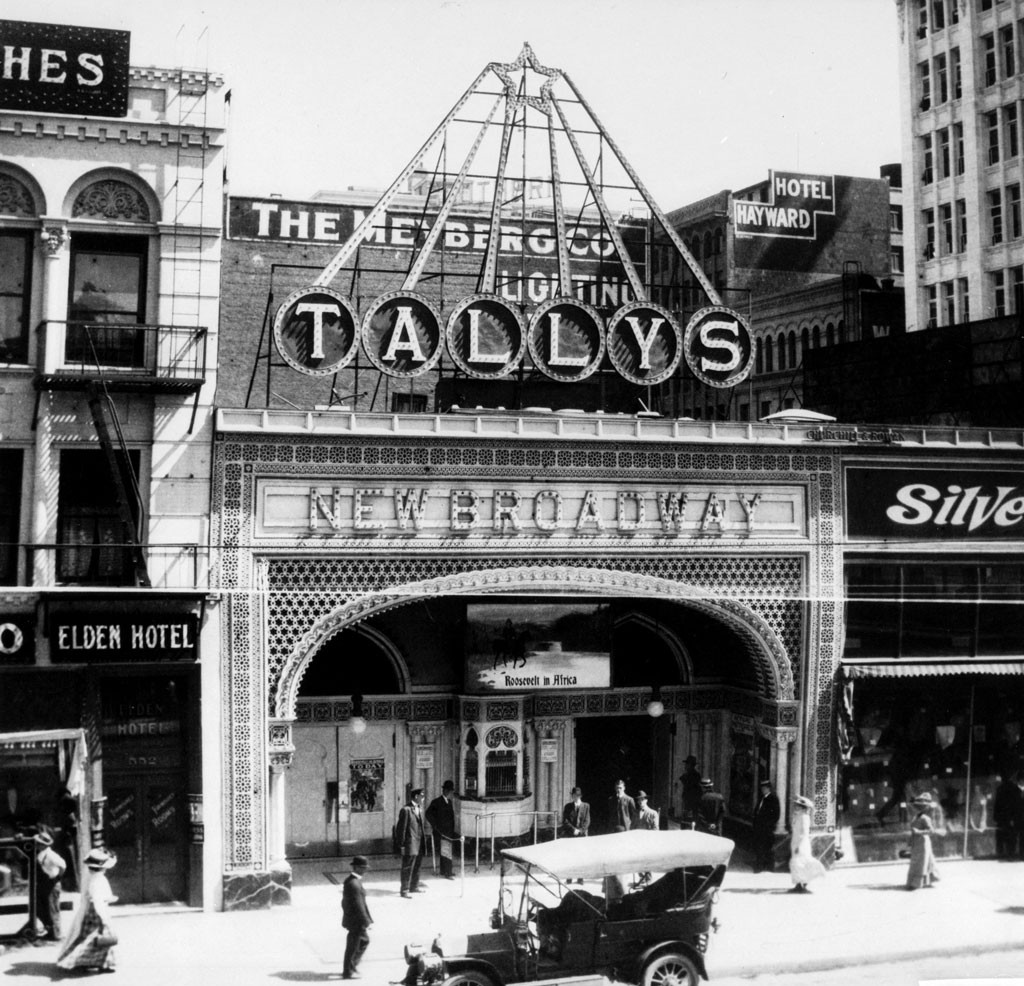Thomas Edison created a film projector called the vitascope and sold them to many vaudeville theaters as an act.[1] For example, the vitascope played at the Keith’s Bijou Theatre in Philadelphia.[2] However, many times, theaters were not able to use the vitascope due to electrical problems.[3] Across the Atlantic, two French technicians, Auguste and Louis Lumiere were also selling a projector/camera called the cinématographe.[4] The cinématographe was hand-cranked, so it did not have the same electric problem as the vitascope.[5] As mentioned, Edison sold his vitascope to Keith’s Bijou Theater. That same theater later replaced its vitascope with the cinématographe two months later for a 19-week run.[6]
Once again, these projectors were sold to theaters as acts but what was the first theater dedicated to showing movies? The answer, like any answer regarding film history, is complicated. Edison opened his own store in New Orleans named Vitascope Hall on July 26, 1896.[7] However, Guinness considered The State Theatre in Washington, Iowa to be the first theater. [8] The problem with The State Theatre is that it was originally an opera house before it started to show films. So what do historians considered to be the first theater? While the Vitascope Hall was the first-place dedicated to showing films, Tally’ Electric Theatre was the first prominent, modern example of a movie theater as the building itself was constructed for the sole purpose of showing films.[9] Vitascope Hall, on the other hand, occupied a storefront that Edison bought.[10]
Tally’s Electric Theater opened in 1902 and according to advertisement promoting its opening, the first movies shown were Capture of the Biddle Brothers and New York City in a Blizzard. These films were shot by Edwin S. Porter, who frequently worked for Edison. Porter’s works as a director greatly influenced the rise of theaters. A year later, Porter released The Great Train Robbery.[11] It was one of the first films that pioneered new techniques including the use of non-linear editing, framing, multi-cameras, and on-location sets. The success of this film caused a huge explosion in the rise of theaters, which were called Nickelodeon. The word came from the combination of nickel since admission was only a nickel, and “odeon” which means theater in Greek.[12]
Banner photo: https://mypublicist.blogspot.com/2016/04/this-day-in-entertainment-1902-tallys.html
[1] Robert C. Allen, “Vitascope/Cinématographe: Initial Patterns of American Film Industrial Practice,” Journal of the University Film Association 31, no. 2 (Spring 1979): 16.
[2] Deac Rossell, “A Chronology of Cinema, 1889-1896,” Film History 7, no. 2 (Summer 1995): 151.
[3] Allen, “Vitascope,” 16.
[4] Allen, “Vitascope,” 14.
[5] Allen, “Vitascope,” 16.
[6] Rossell, “A Chronology of Cinema,” 15.
[7] Rossell, “A Chronology of Cinema,” 159.
[8] Aaron Young, “This Iowa Movie Theater is the Oldest of Its Kind in the Entire World,” Des Moines Register, last modified June 6, 2018, https://www.desmoinesregister.com/story/entertainment/movies/2017/01/10/iowa-oldest-movie-theater/96400194/.
[9] David Goldfield, ed., Encyclopedia of American Urban History (Thousands Oaks, California: SAGE Publications, 2006), 498.
[10] Rossell, “A Chronology of Cinema,” 159.
[11] Robert Sklar, Movie-Made America: A Cultural History of American Movies (New York: Vintage Books, 1994, 24.
[12] Frank W. Hoffmann and William G. Bailey, Arts & Entertainment Fads, (Binghamton, NY: Haworth Press, 1990), 203.


